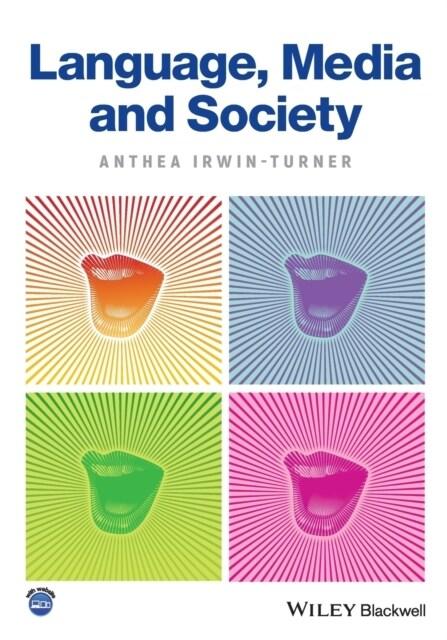책 이미지

책 정보
· 분류 : 외국도서 > 언어학 > 언어학 > 사회언어학
· ISBN : 9781119669142
· 쪽수 : 240쪽
목차
Introduction: Defining the terms
The section will:
- answer the questions ‘what do I mean by language?’, ‘what do I mean by media?’, ‘what do I mean by society?’
- outline which aspects of language and linguistic frameworks, media, and society or sociology will and will not be considered
Chapter 1: Getting started
Key themes:
- How people use language and other forms of communication in individual interactions
- Attitudes to language and other forms of communication and their implications
- How we are positioned by language, communication and the media
Key concepts explored: stereotyping, ideology, postmodernism.
Chapter 2: Producers and audiences
Key themes:
- What and who media producers are
- what and who media consumers are
- Identifying the shifting and blurring boundary between the two
- Implications of social media platforms
Key concepts explored: public service and commercial broadcasting; editorial stance; models of audiences; citizen journalism; online identities.
Chapter 3: Reading and (re) producing media messages
Key themes:
- How we read and interpret media texts
- Analysing language in media
- Analysing images in media
- Analysing multimodal texts
Key concepts explored: representation; genre; intertextuality; basic moving image analysis.
Chapter 4: Language, Media and Gender
Key themes:
- how gender identity is constructed
- how women, men, and transgender people are represented
- how women and men talk and interact
Key concepts explored: Gender; representation, construction and performance; gendered / sexist terminology and interaction patterns; discourse; deficit, dominance, difference, and social constructionist approaches to gender difference.
Chapter 5: Language, Media and Age
Key themes:
- Changing constructions of age and lifestage
- How people of different ages are represented
- How people of different ages use language
- How language is used when conversing with people of different age groups
Key concepts explored: representation; stereotypes; sociohistorical construction of age; language change; technology / literacy debate; child directed language / language acquisition debate.
Chapter 6: Language, Media and Social Class
Key themes:
- Definition and relevance of social class.
- How it relates to how we use language and media and how we perceive how others use them
- How social class is represented in the media
Key concepts explored: sociohistorical shifts in social class construction; accent and dialect; bidialectalism; overt and covert prestige; style shifting; forms of capital; habitus; representations and stereotypes of social class.
Chapter 7: Language, Media and Ethnicity
Key themes:
- (Contested) definitions of race and ethnicity
- Language use related to ethnicity: language varieties, creativity, attitudes, racism and resistance.
- Changing representations of ethnicity in media.
Key concepts explored: bidialectalism; codeswitching; crossing; reclaiming language; objectification and subject positions; cultural appropriation; privilege.
Chapter 8: Language, Media and Sexuality
Key themes:
- How language is used by LGBT+ people
- How language is used about LGBT+ people
- Media representations of sexuality
Key concepts explored: shifting LGBT+ terminology; language for visibility and invisibility; othering; mainstreaming; the ‘pink pound’ / ‘dorothy dollar’; objectification and subject positions.
Chapter 9: Language, Media and Disability
Key themes:
- (Contested) constructions of disability
- Disability, identity and culture
- How language is used about disabled people
- Media representations of disability
Key concepts explored: models of disability; sociohistorical and ideological implications; ‘people first’ language; themed representations – sweet innocent, obsessive avenger, freakish, rehabilitative, differently able, supercrip; objectification and subject positions.
Chapter 10: Bringing it all together
Key themes:
- Interaction and intersection of different aspects of identity
- Case studies: personal experience and media texts
Key concept explored: intersectionality.





















